The Best Science Books Of 2018
34:16 minutes
Here at Science Friday, our jobs involve reading a lot of science books every year. We have piles and piles of them at the office. Hundreds of titles about biology and art and technology and space, and sometimes even sci-fi.
Now, the time has come for our annual roundup of the books we couldn’t forget. And we’ve been asking you, our listeners, to send us voice memos with your picks for best science book of 2018. Here’s just a few:
Jeff Grant in Batavia, Illinois:“My book recommendation for 2018 is The Rise and Fall of the Dinosaurs by Steve Brusatte. Dr Brusatte writes in an eloquent way that is easy for everybody to understand and he sheds new light on dinosaur evolution. It is a must read for all of you dino buffs out there.”
Julie G. in Mantua, New Jersey:“Origin Story by David Christian gives you the big history of everything just like it says. It’s really informative and I’m still picking up the pieces of my mind that it blew while reading it. Definitely deserves a second read.”
Steve in Seattle:“I recommend The Promise of the Grand Canyon: John Wesley Powell’s Perilous Journey and His Vision for the American West. In addition to just being an exciting read about Powell’s journey through the Grand Canyon, it also addresses his being way ahead of his time in dealing with issues we’re still addressing today. Land use issues, environmental issues, the government and private industry. I think it’s a great read! Thanks a lot.”
Laura in Boulder, Colorado:“I wanted to recommend Ben Goldfarb’s book The Surprising, Secret Life of Beavers and Why They Matter. It’ll just completely make you rethink what a natural stream should look like.”
Will Grover in Riverside, California:“My favorite science book of 2018 is Sex on the Kitchen Table, by Norman Ellstrand. This book shares the secret sex lives of our favorite fruits and veggies. For example did you know tomato farmers use special vibrators to help their plants reproduce? And bananas have been bred to not have sex at all. You learn that plants reproduce in all kinds of weird and wonderful ways and how important these different kinds of plant sex are to our food supply.”
We have plenty of picks from from our panel of expert guests: Stephanie Sendaula of Library Journal Reviews, Deborah Blum of MIT’s Knight Science Journalism Program, and Dr. Eric Topol of Scripps Research. Check out their top picks below.
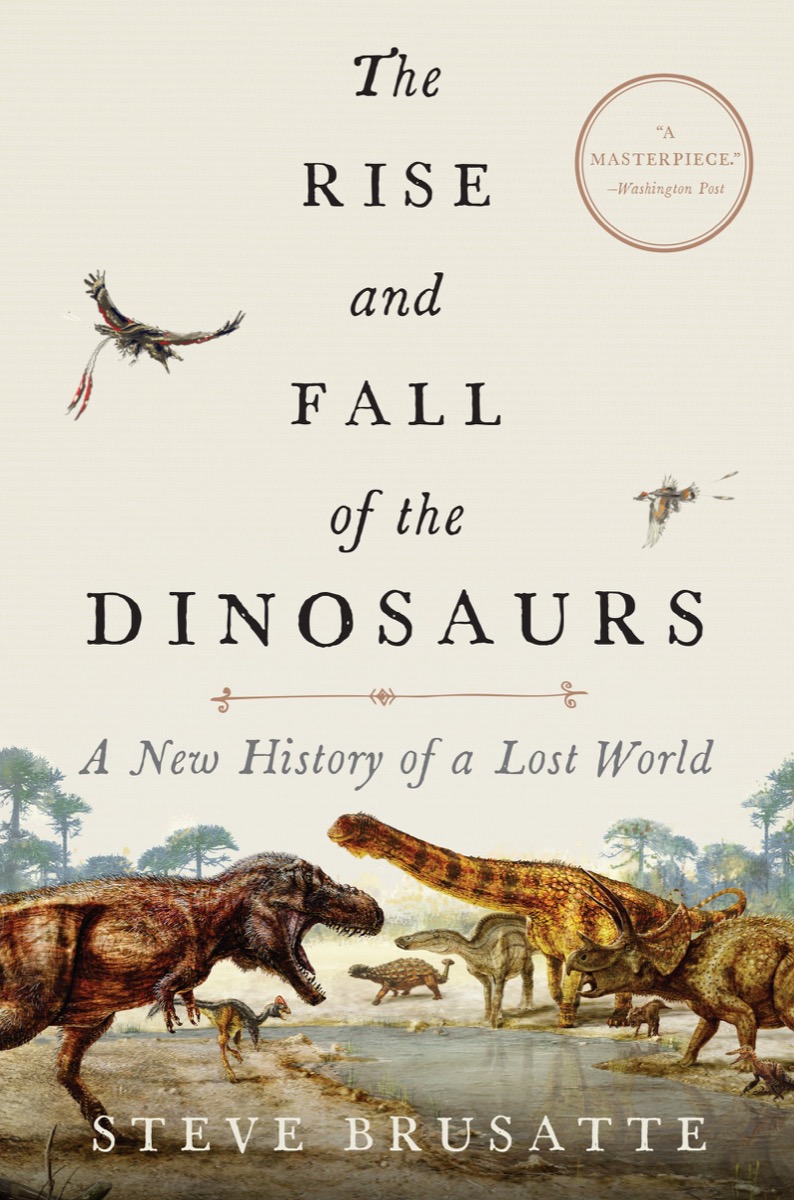 The Rise and Fall of the Dinosaurs: A New History of a Lost World by Steve Brusatte
The Rise and Fall of the Dinosaurs: A New History of a Lost World by Steve BrusatteDinosaurs. Who doesn’t love ‘em? And Steve Brusatte’s engrossing book takes us around the world and through time to uncover little-known details about these beloved creatures and the explorers who uncovered their stony remains.
 Broad Band: The Untold Story of the Women Who Made the Internet by Claire Evans
Broad Band: The Untold Story of the Women Who Made the Internet by Claire EvansBroad Band does for Silicon Valley what Hidden Figures does for space exploration: reveal the women who were critical to the rise and development of our cyber world.
Listen to an interview with the author of Broad Band.
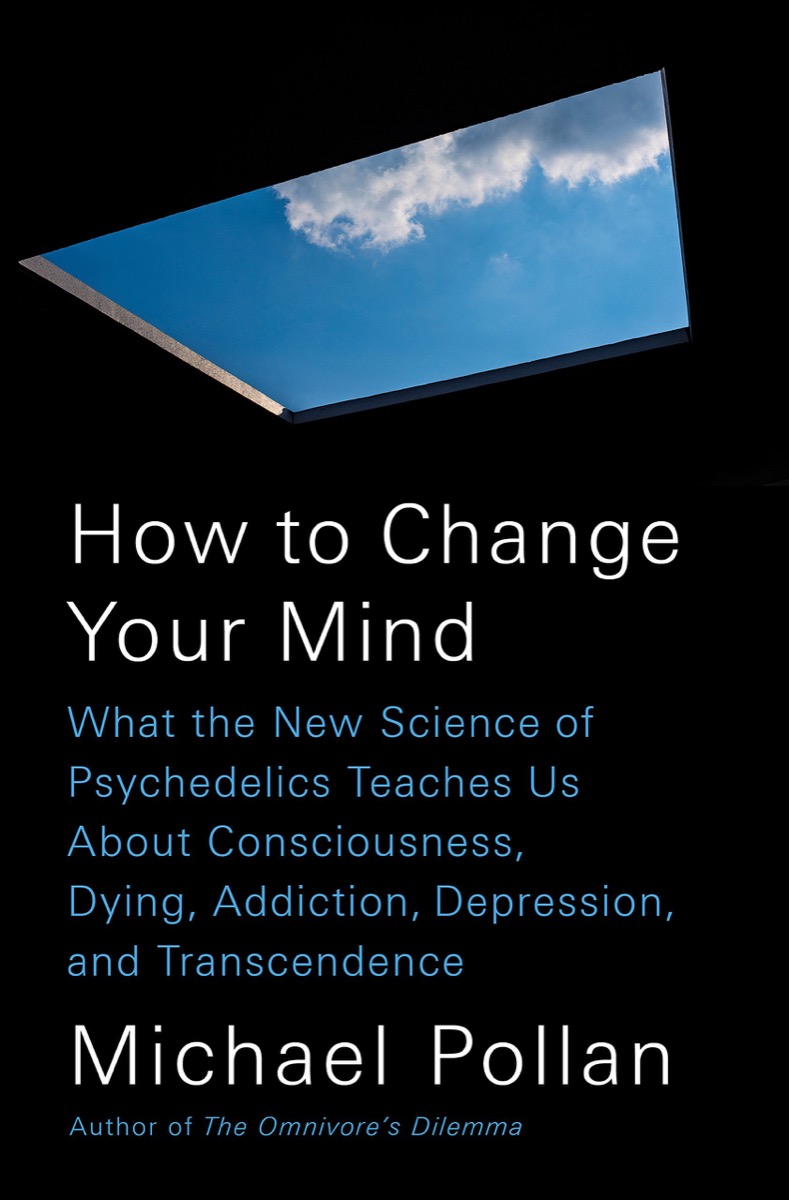 How To Change Your Mind by Michael Pollan
How To Change Your Mind by Michael PollanThis book will blow your mind. Poof. Michael Pollan skillfully weaves a tale of how psychedelics, once denigrated as a head-trip of the 1960’s, are now being rediscovered as valuable research and treatment tools for mental illnesses. A must read!
Listen to an interview with the author of How To Change Your Mind.
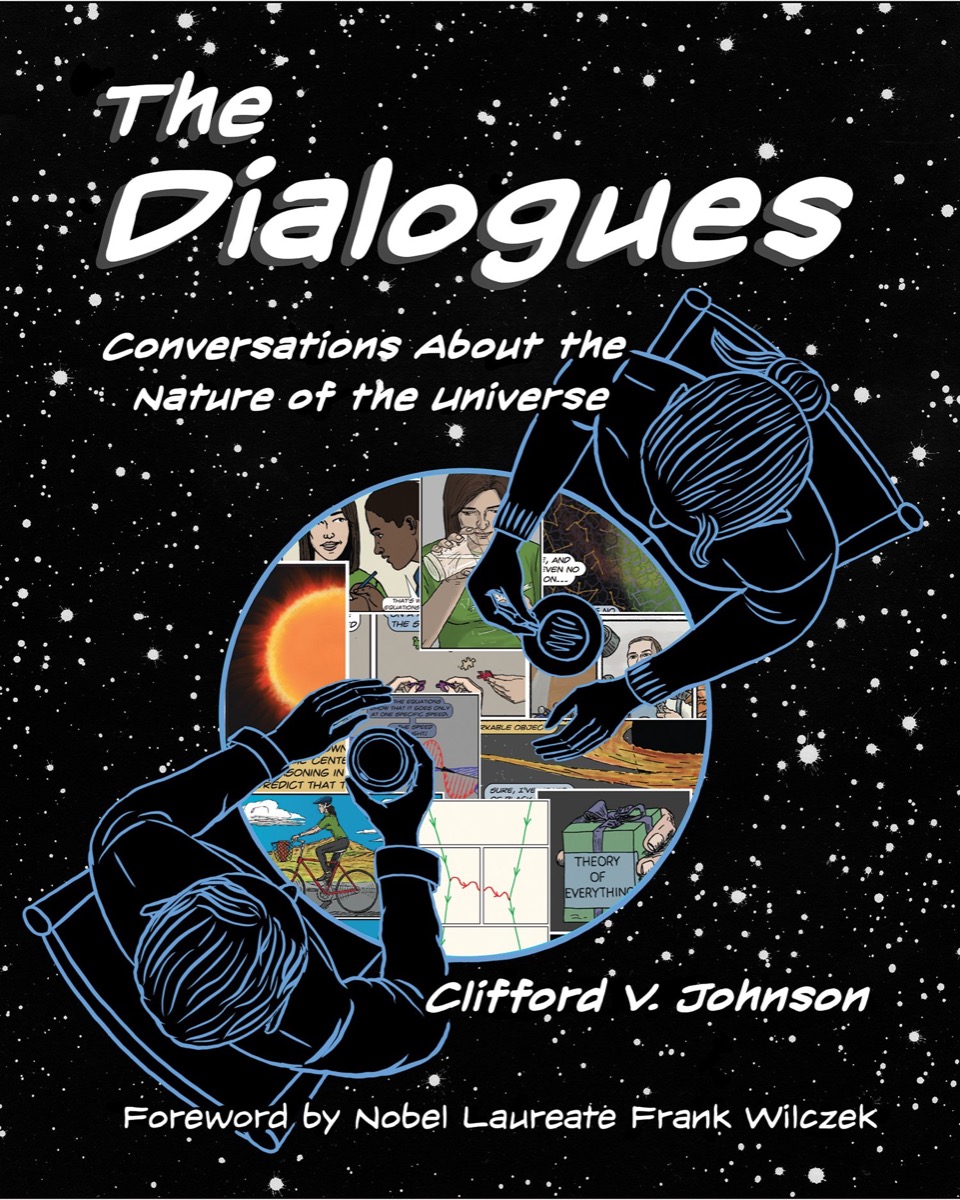 The Dialogues: Conversations about the Nature of the Universe by Clifford V. Johnson
The Dialogues: Conversations about the Nature of the Universe by Clifford V. JohnsonHow to you discuss big, hair-hurting ideas in a user friendly way? Make a graphic novel about them. For me, the most original, creative and magical science book of 2017. Yes, it was last year’s book. But I didn’t read it until this year. And I cannot leave it out.
Listen to an interview with the author of The Dialogues.
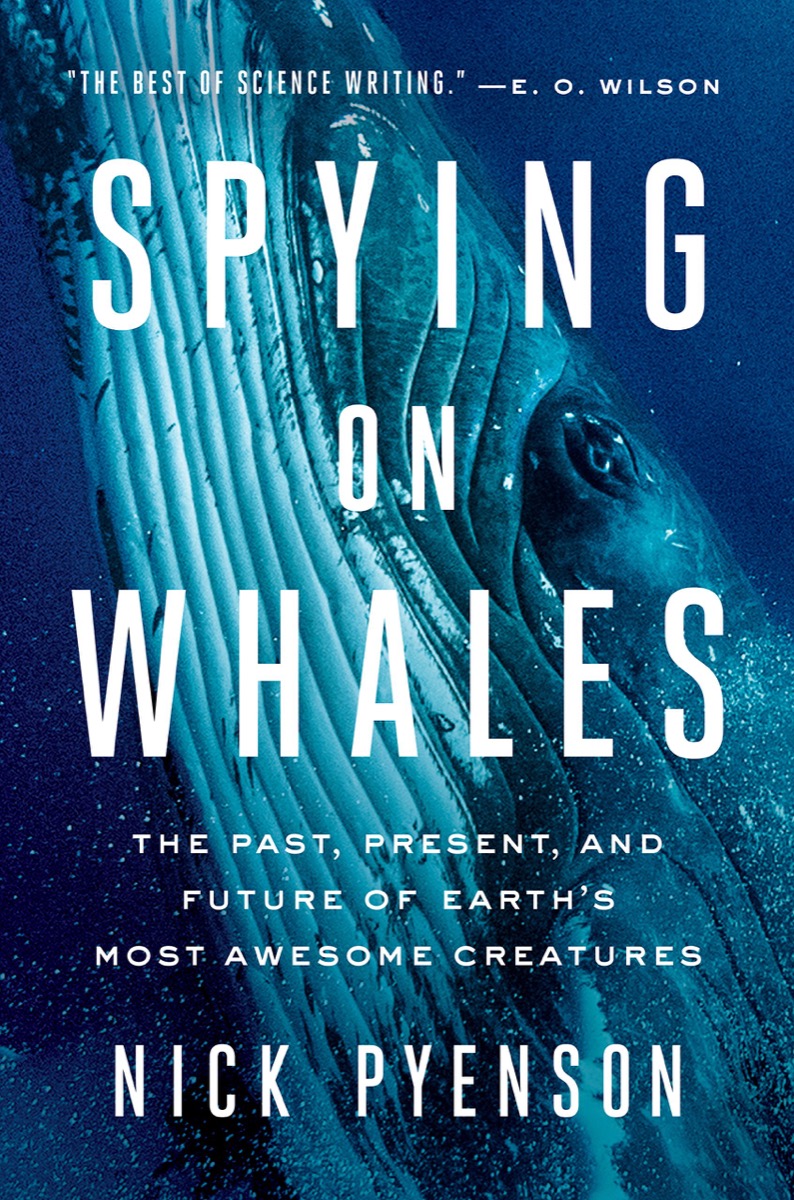 Spying on Whales: The Past, Present, and Future of Earth’s Most Awesome Creatures by Nick Pyenson
Spying on Whales: The Past, Present, and Future of Earth’s Most Awesome Creatures by Nick PyensonFrom the coast of Panama to the foothills of the Sierra Nevada, Pyenson explores remaining questions about whales while also examining evidence for the evolution of the species from land mammals to the sea creatures we are familiar with today.
Listen to an interview with the author of Spying on Whales.
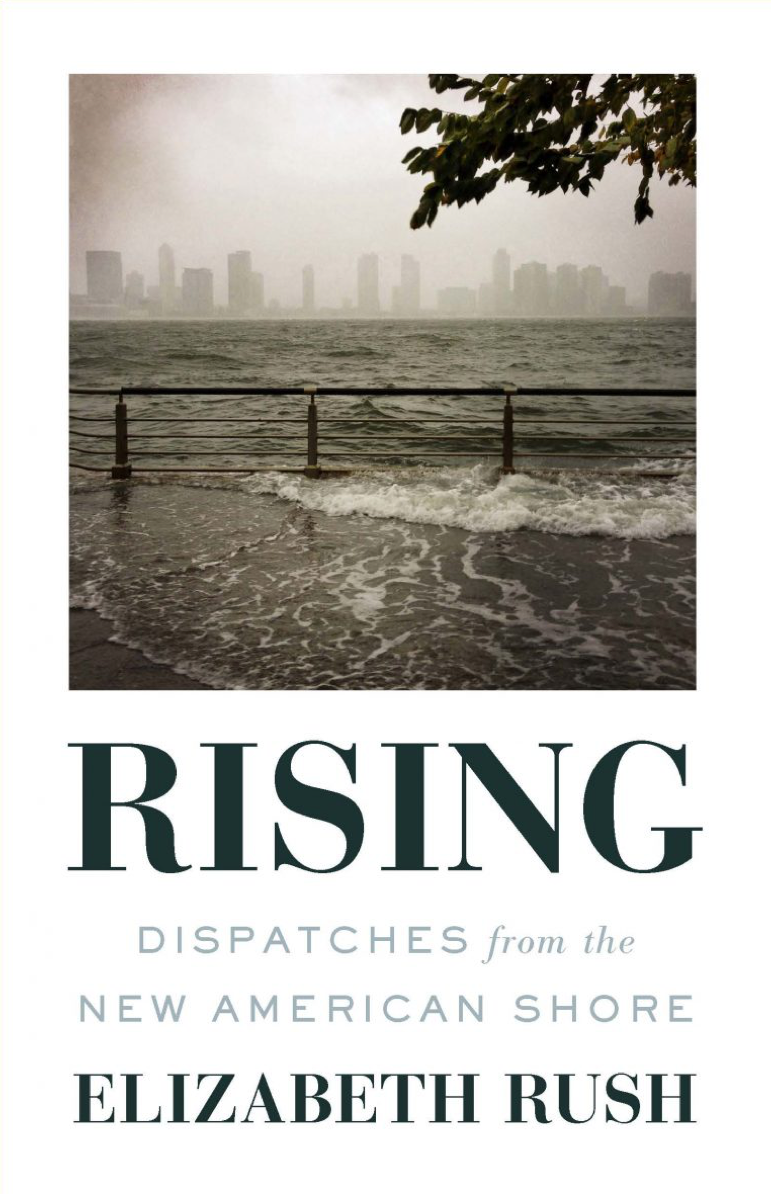 Rising: Dispatches from the New American Shore by Elizabeth Rush
Rising: Dispatches from the New American Shore by Elizabeth RushProving that rising sea levels are not just a vision of the future, environmental writer Rush visits several states to see the effects of climate change and meet those impacted by rising waters along with researchers documenting it all.
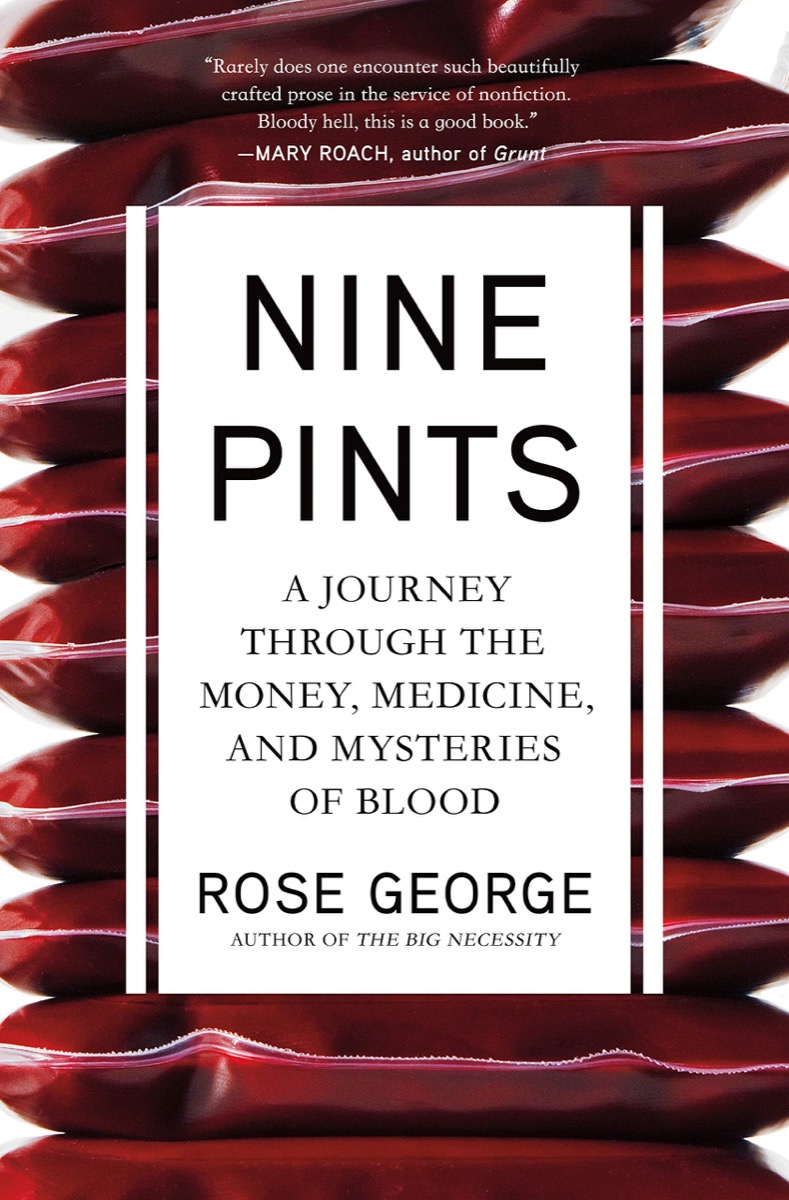 Nine Pints: A Journey Through the Money, Medicine, and Mysteries of Blood by Rose George
Nine Pints: A Journey Through the Money, Medicine, and Mysteries of Blood by Rose GeorgeGeorge explores the economic and social injustices surrounding blood; injustices that have a particularly high impact on women. The result is a fascinating work for all curious about blood as commodity in the world economy.
Listen to an interview with the author of Nine Pints.
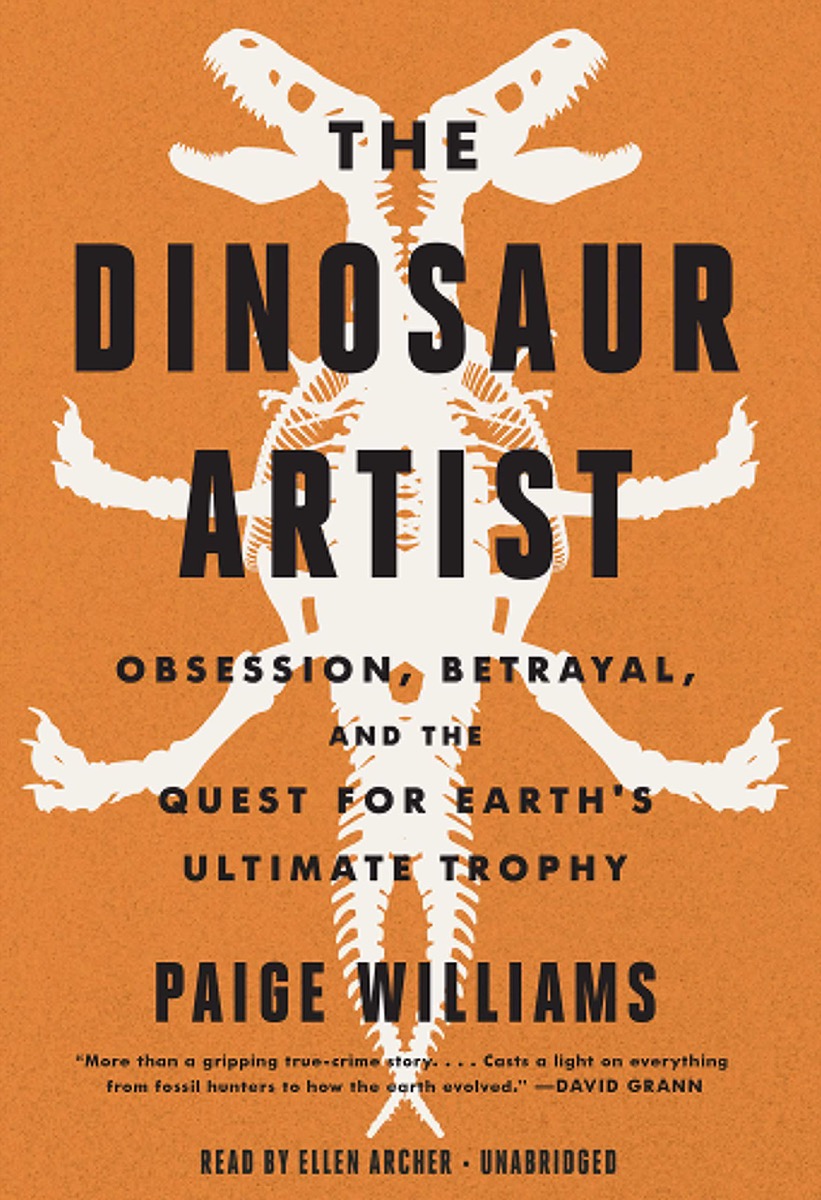 The Dinosaur Artist: Obsession, Betrayal, and the Quest for Earth’s Ultimate Trophy by Paige Williams
The Dinosaur Artist: Obsession, Betrayal, and the Quest for Earth’s Ultimate Trophy by Paige WilliamsWilliams sheds insight into the for-profit fossil trade, highlighting the people who find, prepare, and auction works of prehistory, including large dinosaurs. She skillfully navigates this unique nexus of paleontology and law along with its notorious black markets.
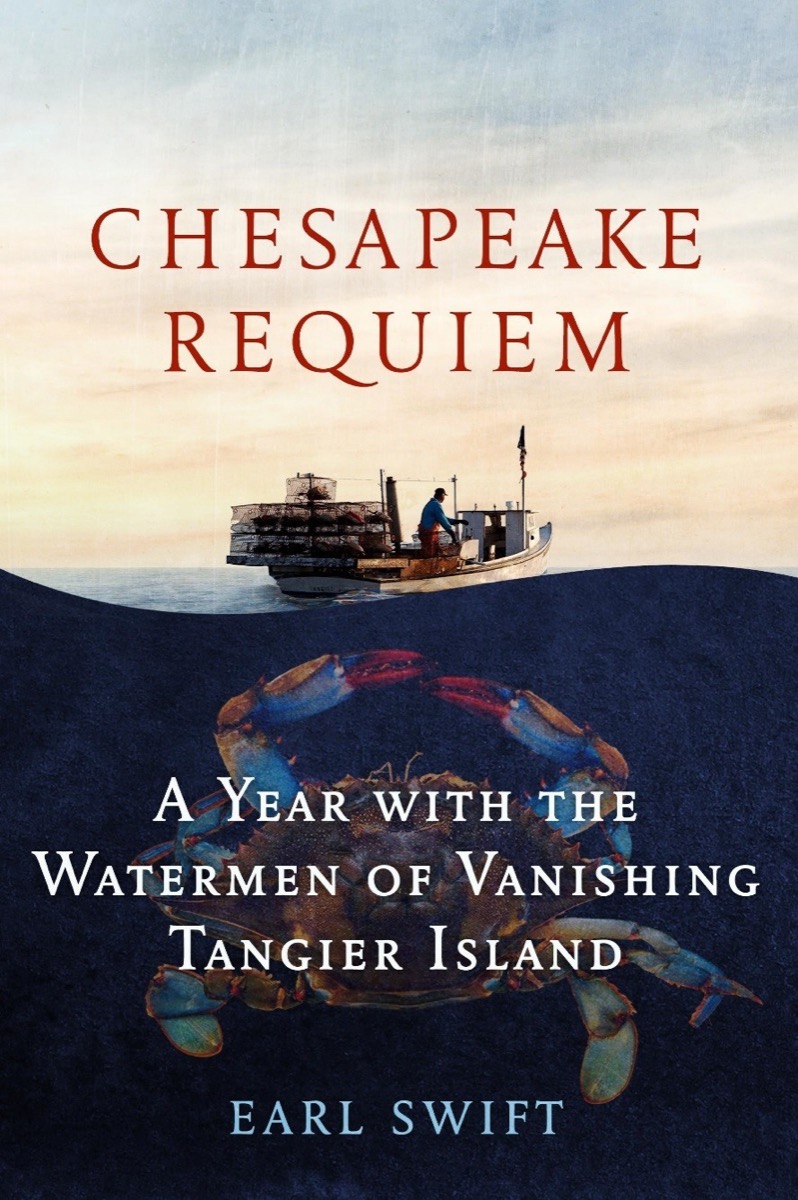 Chesapeake Requiem: A Year With the Watermen of Vanishing Tangier Island by Earl Swift
Chesapeake Requiem: A Year With the Watermen of Vanishing Tangier Island by Earl SwiftOne of the most powerful ways to tell the story of global climate change is to tell it local. And this meticulous, compassionate look at the fishermen and their families, who have for generations made a home on a tiny island in Chesapeake Bay, is a vivid portrait of what we are losing—and why we may fail to stop that loss.
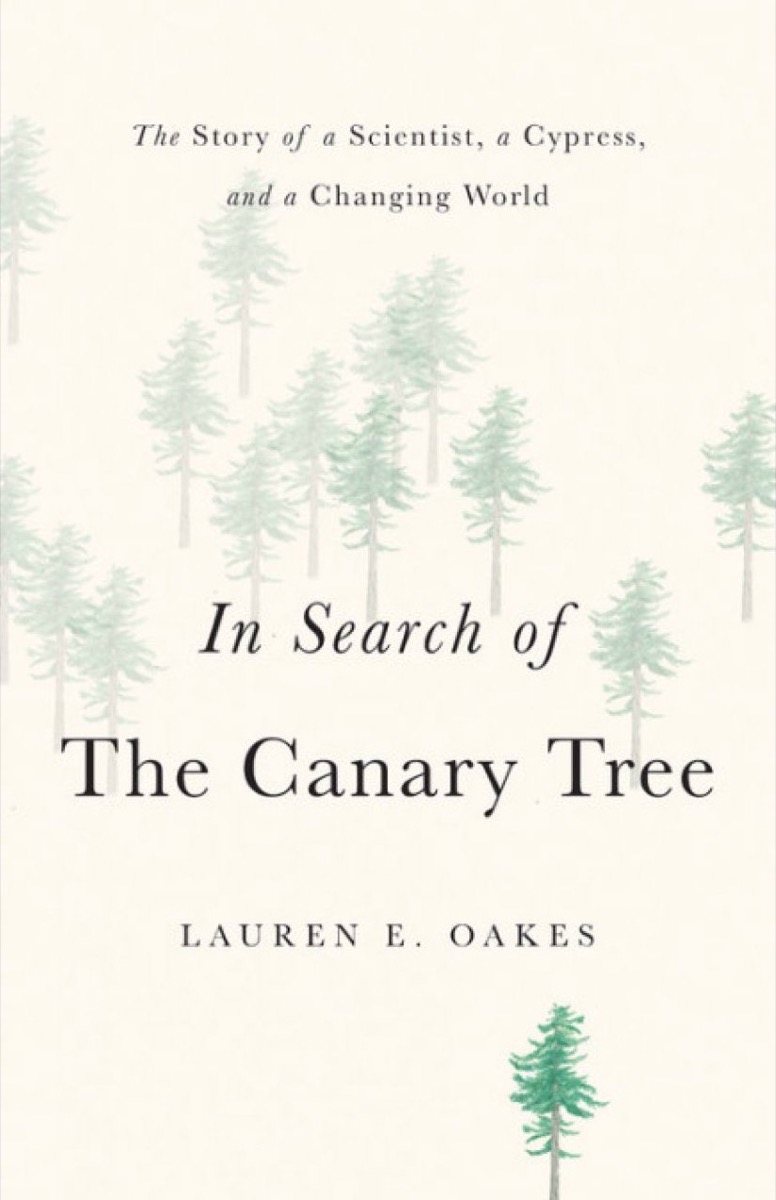 In Search of the Canary Tree by Lauren E. Oakes
In Search of the Canary Tree by Lauren E. OakesYes, this is another book about the effects of climate change—perhaps the most important story of our time—but it’s beautiful, bracing, and even heartening. Oakes is a conservation scientist studying the imperiled yellow cedars of Alaska and her research leads her to ponder resilience in profound ways, from natural adaptation to human determination.
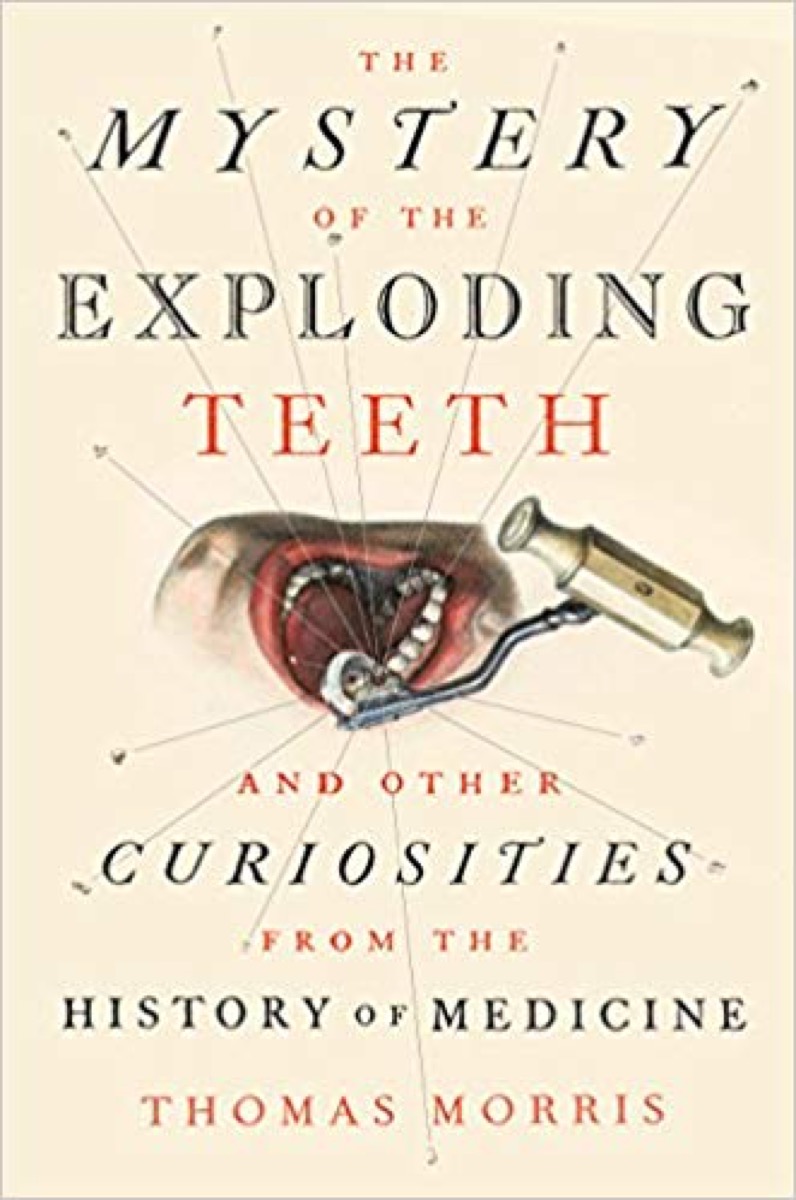 The Mystery of the Exploding Teeth (And Other Curiosities from the History of Medicine) by Thomas Morris
The Mystery of the Exploding Teeth (And Other Curiosities from the History of Medicine) by Thomas MorrisThe truth is I’m a sucker for this kind of book, a series of case studies from our research past that will remind you that we are never as smart as we think. Morris uses images of old documents, and citations from physicians of the past, in way that makes the book both real, grounded—and a lot of fun.
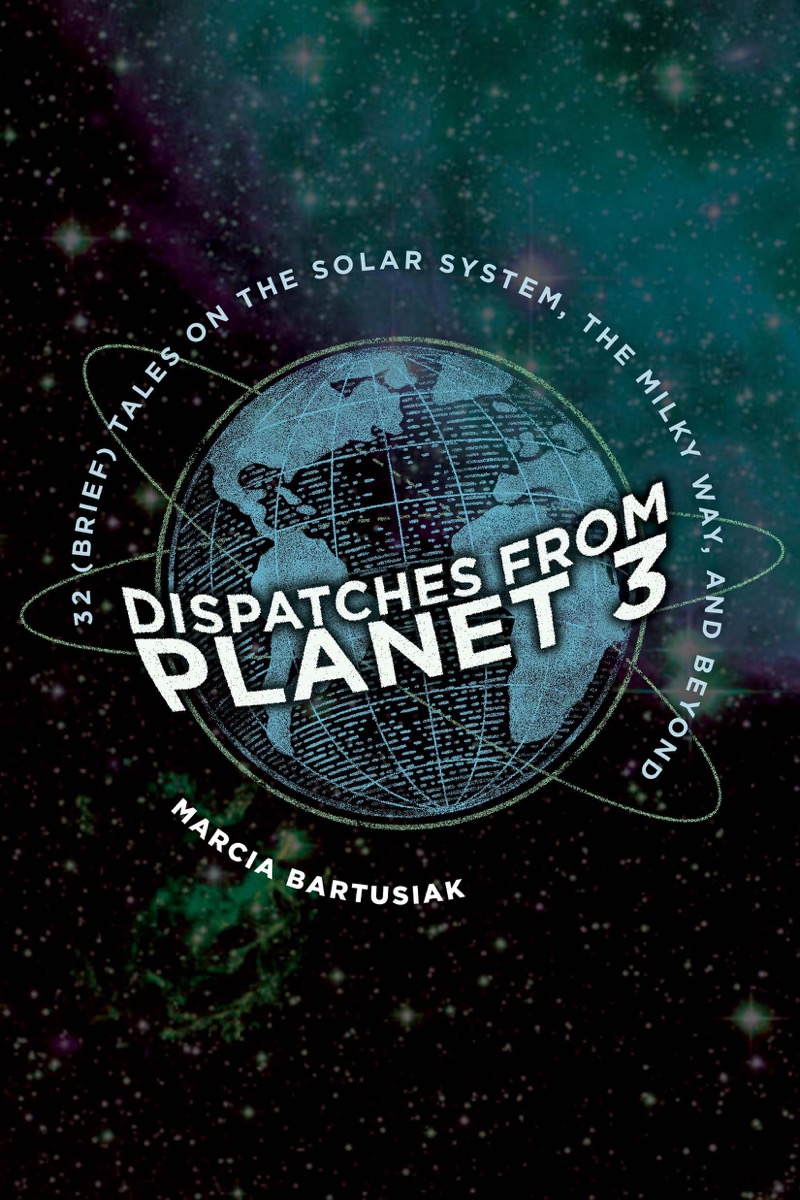 Dispatches from Planet 3: 32 Brief Tales on the Solar System, the Milky Way, and Beyond by Marcia Bartusiak
Dispatches from Planet 3: 32 Brief Tales on the Solar System, the Milky Way, and Beyond by Marcia BartusiakThis is a terrific book for someone like me who is not a physics or astronomy specialist but who wants to just know more about it. These short, gem-like essays are clear, human, and occasionally just lovely. Something like our understanding of the universe.
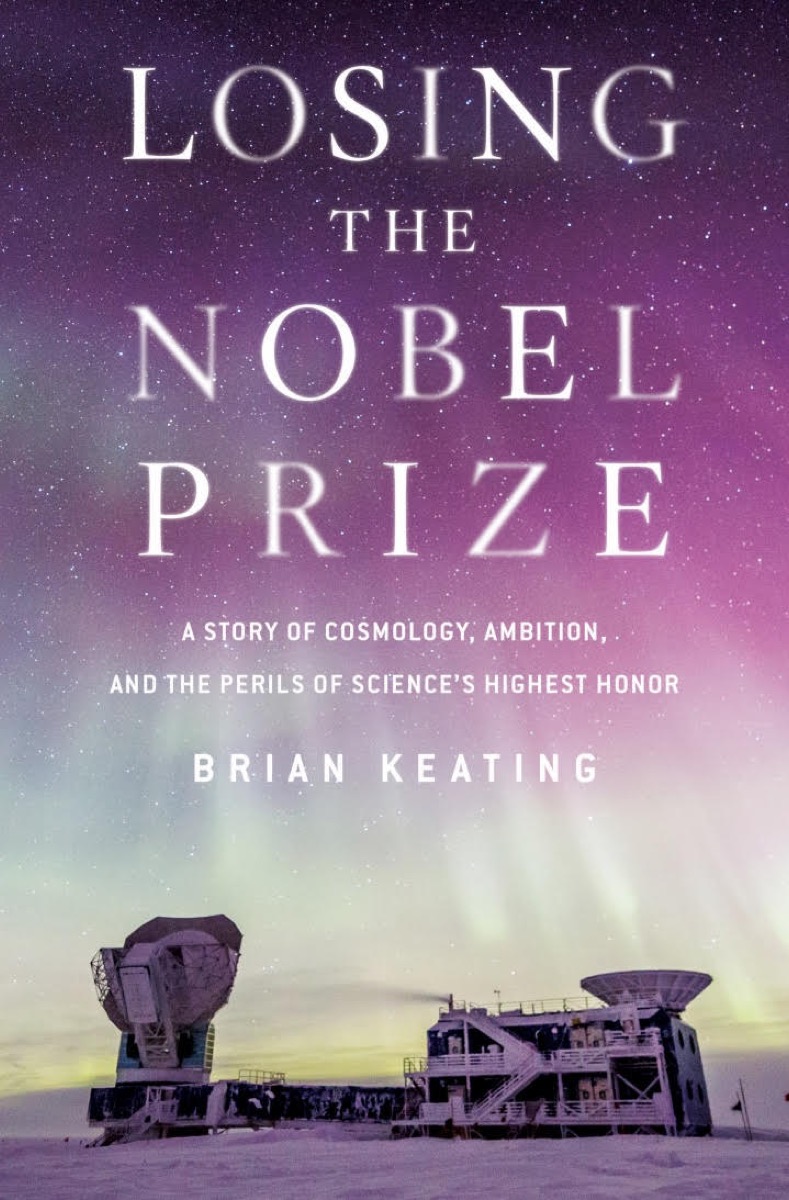 Losing the Nobel Prize: A Story of Cosmology, Ambition, and the Peril’s of Science’s Highest Honor by Brian Keating
Losing the Nobel Prize: A Story of Cosmology, Ambition, and the Peril’s of Science’s Highest Honor by Brian KeatingKeating, a cosmologist who worked on a once-Nobel worthy project, tells the story of its collapse, of the scientific rancor that ensued, and of prize-winning dreams that may, sometimes erroneously, fuel research. It’s a little bitter, a little gossipy, and a lot insightful.
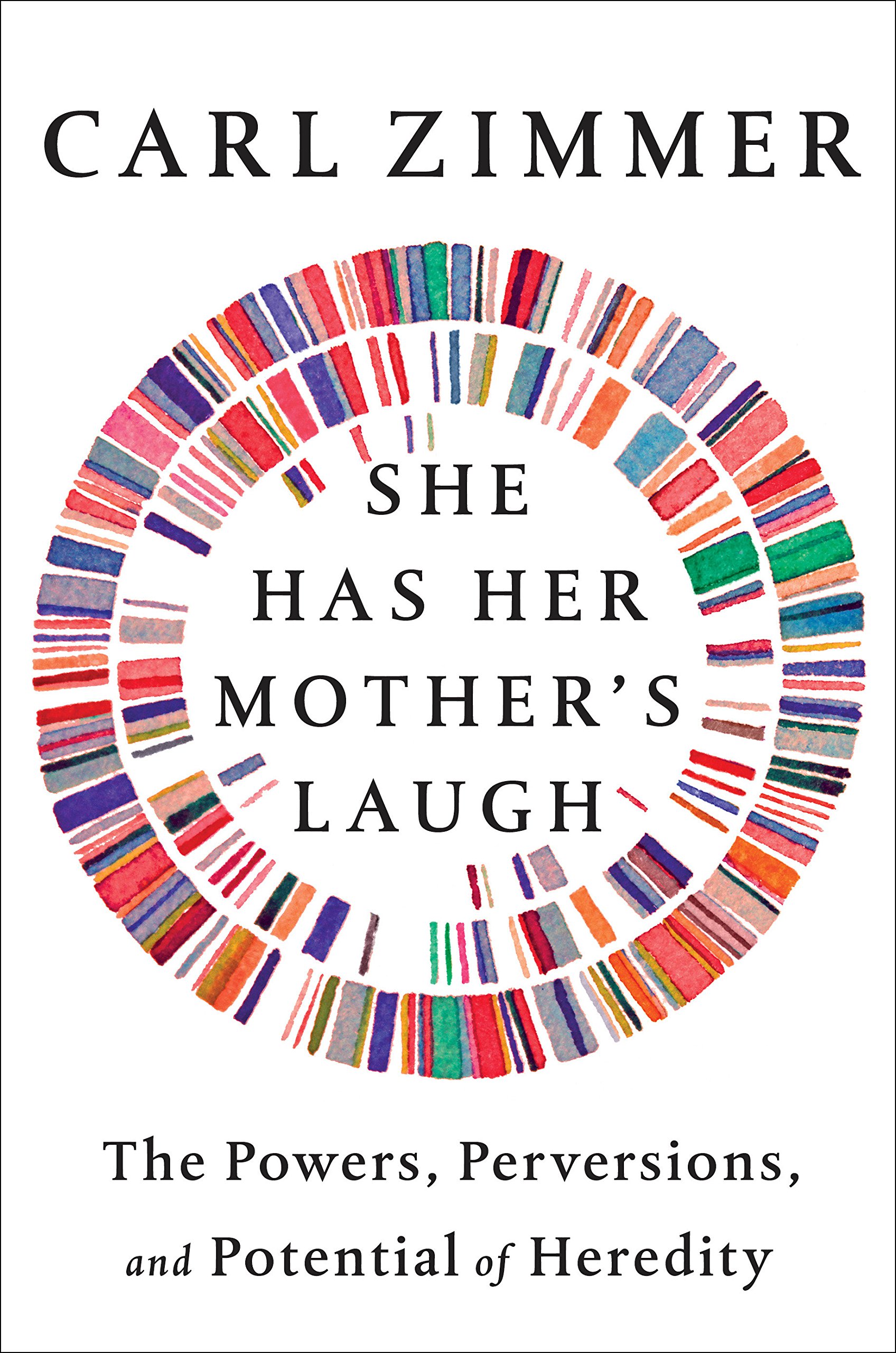 She Has Her Mother’s Laugh by Carl Zimmer
She Has Her Mother’s Laugh by Carl ZimmerThis is clearly Zimmer’s best book. It’s an opus in which he goes through the entire history of genetics and epigenetics, and writes about getting his own genome sequenced too. She Has Her Mother’s Laugh is one of the best books ever written about genetics, along with Siddhartha Mukherjee’s The Gene. They’re the two bookends.
Listen to an interview with the author of She Has Her Mother’s Laugh.
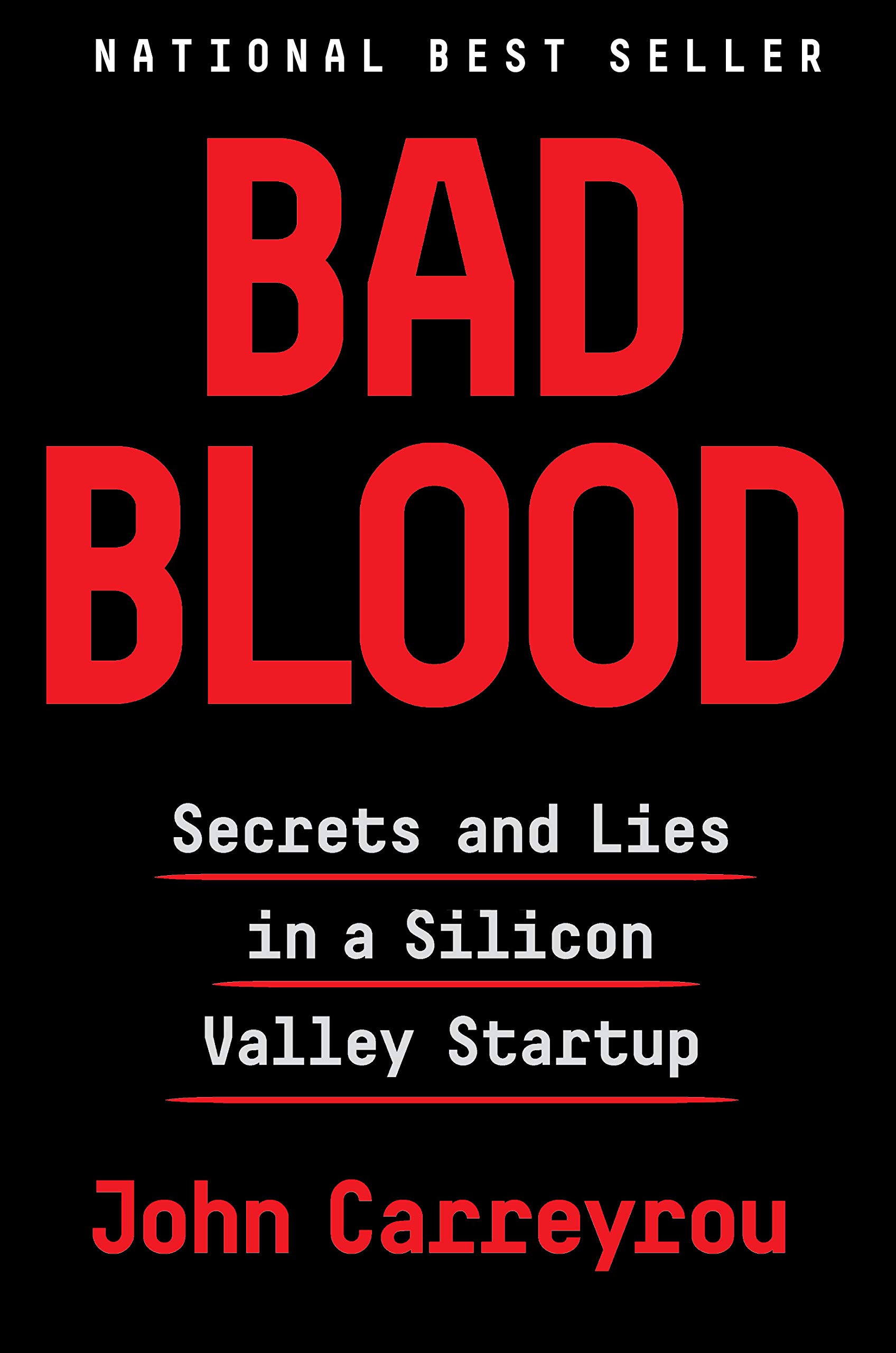 Bad Blood: Secrets and Lies in a Silicon Valley Startup by John Carreyrou
Bad Blood: Secrets and Lies in a Silicon Valley Startup by John CarreyrouI know the story of Theranos and Elizabeth Holmes really well. I’ve met her on a few occasions, from the early days, to the full falling apart of the company. It’s the most extraordinary tale, and John Carreyrou tells it from the inside, as he’s breaking the case. It’s the biggest biotech disaster that we know of and supposedly the biggest fraud since Enron.
 Heart: A History by Sandeep Jauhar
Heart: A History by Sandeep JauharAs a cardiologist, this is my area, and I’d heard about some of these historic milestones in my studies. I think Sandeep is one of the great physician authors of our era. He tells these historical vignettes in such a captivating way, and he also gets really personal with his family. It was fun to relive the stories I’d read about or heard about through his eyes.
Listen to an interview with the author of Heart: A History.
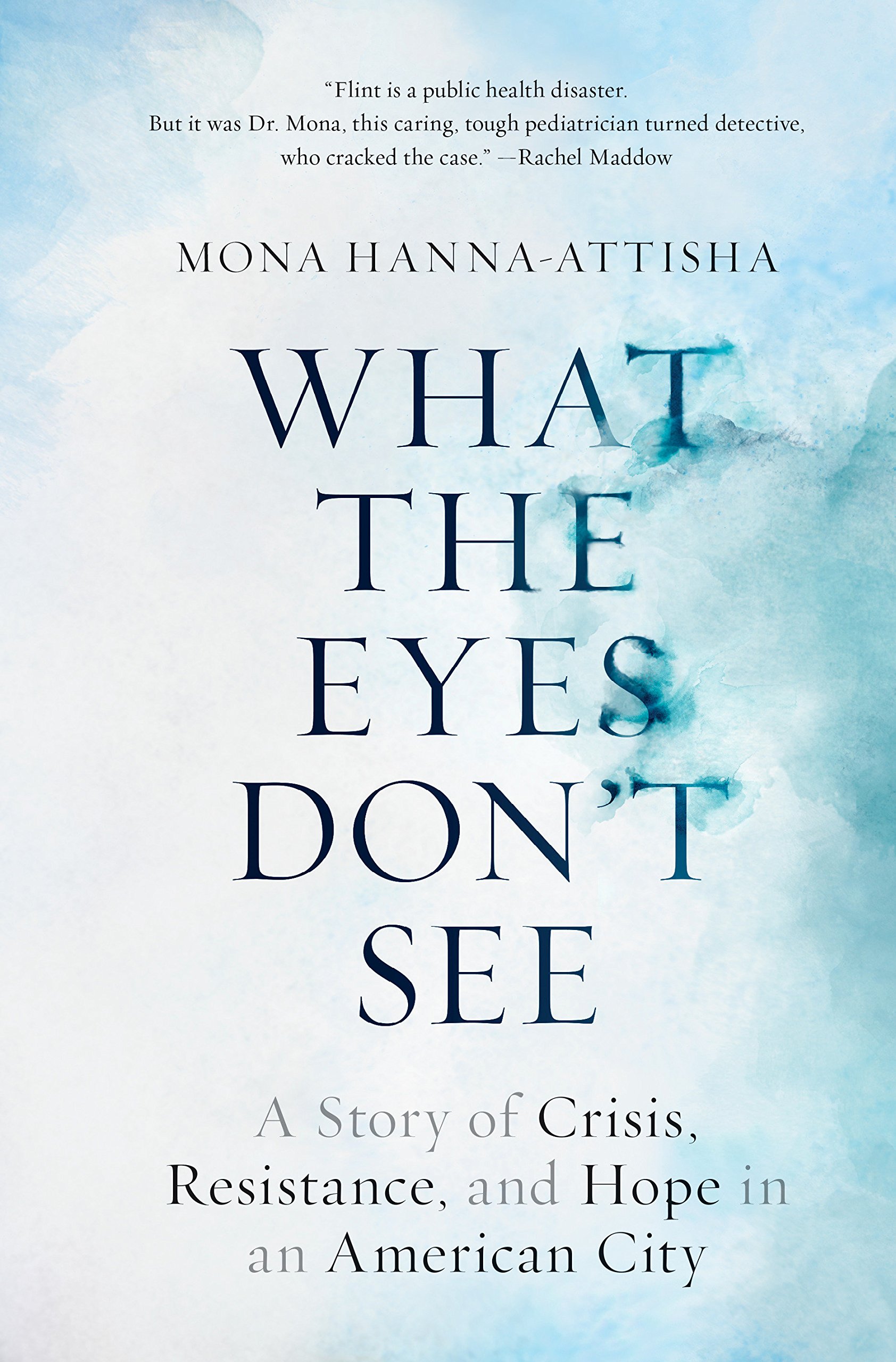 What the Eyes Don’t See by Mona Hanna-Attisha
What the Eyes Don’t See by Mona Hanna-AttishaHanna-Attisha is a doctor and pediatrician in Flint Michigan, and she cracked the case of the Flint lead poisoning–she’s a hero. She started her own testing of the water because of her suspicion and then confronted the local government, which was in a state of denial. This story ought to be made into a movie, sort of like Erin Brockovich, but with a doctor as the star.
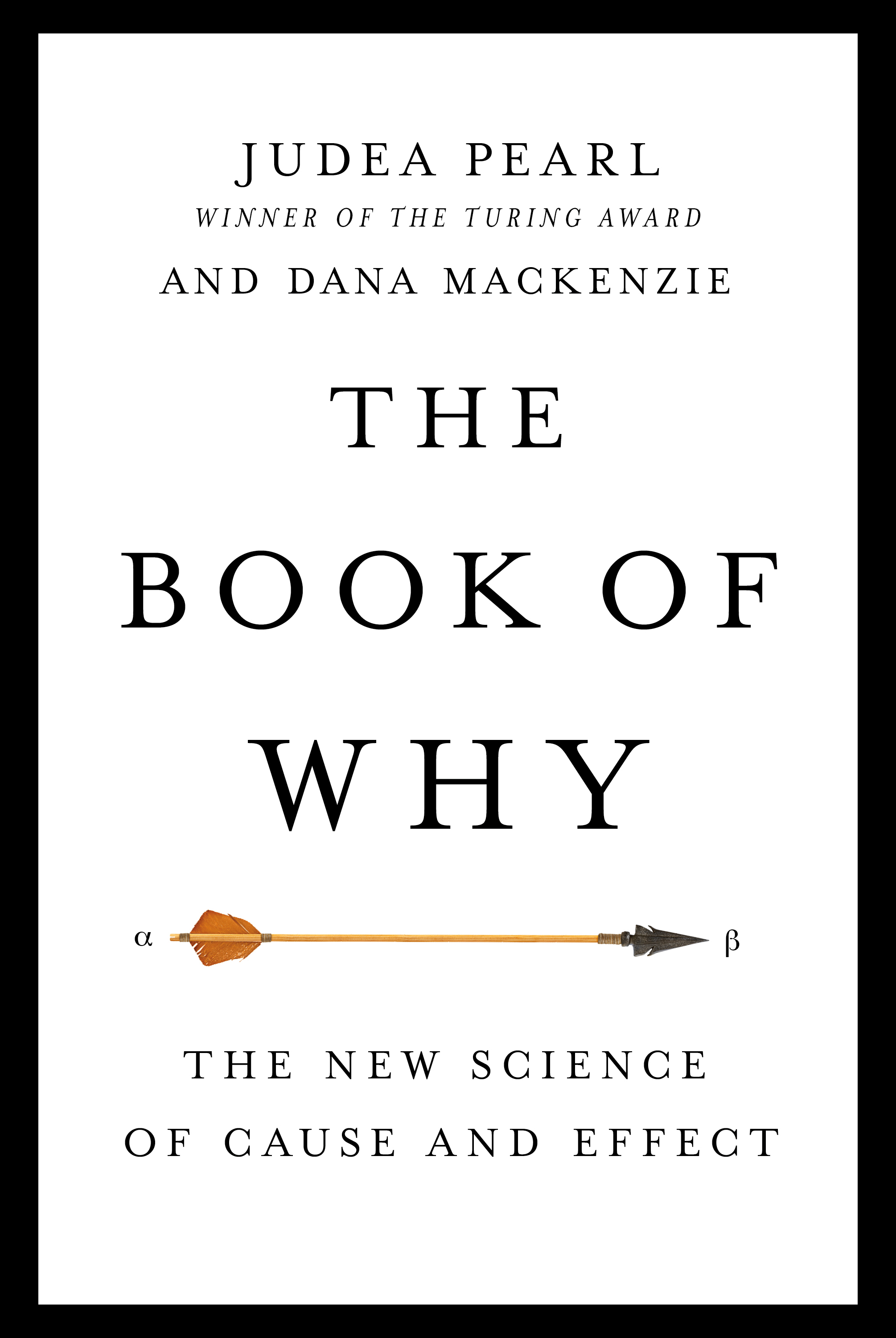 The Book of Why: The New Science of Cause and Effect by Judea Pearl and Dana Mackenzie
The Book of Why: The New Science of Cause and Effect by Judea Pearl and Dana MackenzieCause and effect is one of the most heavily debated, difficult-to-prove things in science and medicine. This book really gets you thinking about cause and effect as it applies to issues of our time, such as: How come cigarettes were around for years and we never showed they were causing cancer or heart disease? The authors goes through these cases like an interrogation, and it’s just extraordinary.
Science Friday is a Bookshop affiliate; when you buy a book from one of the links above, we get a portion of the proceeds from whatever you buy.
Stephanie Sendaula is a programming and outreach specialist for LibraryLinkNJ in Lawrenceville, New Jersey.
Deborah Blum is a science journalist & author, the publisher of Undark magazine, and the director of the Knight Science Journalism Program at the Massachusetts Institute of Technology in Cambridge, Massachusetts.
Dr. Eric Topol is the author of several books, including Deep Medicine: How Artificial Intelligence Can Make Healthcare Human Again (Basic Books, 2019) The Patient Will See You Now: The Future of Medicine is in Your Hands (Basic Books, 2015), practicing cardiologist at the Scripps Clinic, and a genomics professor at the Scripps Research Institute in La Jolla, California.
IRA FLATOW: This is Science Friday. I’m Ira Flatow. You know, my job involves reading a lot of science books every year. I mean, we get– I’m not making this up. We get about 50 to 100 a week that come into our office. And we have piles of them back at the office, hundreds of titles about biology, art, technology, space, sometimes even science fiction.
That’s why it’s always fun to pick through the piles for our annual roundup of books that we couldn’t forget for Best Science Book of 2018. And all week long, we’ve been asking you, our faithful listeners, to send us voice memos with your picks. And here’s one.
JEFF: My name is Jeff [INAUDIBLE] from Batavia, Illinois. And my book recommendation for 2018 is The Rise And Fall Of Dinosaurs by Steve Brusatte. Dr. Brusatte writes in a eloquent way that is easy for everybody to understand. And he sheds new light on dinosaur evolution. It is a must-read for all of you dino buffs out there.
IRA FLATOW: Me being one of them. That’s one of my favorite books of the year. Well, and we had this one also from Julie G. in New Jersey.
JULIE G: Origin Story by David Christian gives you the big history of everything, just like it says. It’s really informative, and I’m still picking up the pieces of my mind that it blew while reading it. It definitely deserves a second read.
IRA FLATOW: Now, we’ve gathered a panel of readers here with us to guide us through year, the year in books. We want to know what they thought about them. Stephanie Sendaula– Sendaula like New York “dolla.”
STEPHANIE SENDAULA: Yeah.
IRA FLATOW: Sendaula is an associate editor at Library Journal Reviews here in New York. She’s with us here in our New York studios. Welcome.
STEPHANIE SENDAULA: Thank you. Thank you for having me, Ira.
IRA FLATOW: You’re welcome. Deborah Blum, director of the Knight Science Journalism Program at MIT and author of The Poison Squad, a solid pick, as we’ll be talking about it. Welcome back, Deborah.
DEBORAH BLUM: Thank you. It’s great to be back.
IRA FLATOW: Dr. Eric Topol, a cardiologist and executive vice president and professor at Scripps Research in La Hoya, California. Good to have you back, Eric.
ERIC TOPOL: Thanks, Ira. Good to be with you.
IRA FLATOW: And we have a full list of our panel’s recommendations and some of mine. You can see them all at sciencefriday.com/bestbooks. So let’s get right to it. Stephanie, give us your top pick.
STEPHANIE SENDAULA: My top pick is Spying on Whales by Nick Pyenson. This was a great history of the evolution of whales, from the time when they were living on land, and had four legs, and were the size of small, domestic dogs until their time now, one of the largest aquatic animals.
I really like how he talked about how we don’t actually know much about whales. They’re very enigmatic. They live far at sea. They travel deep to places we don’t know and to light doesn’t reach. So they’re difficult to photograph and tag. So I think the mysterious element makes it even more intriguing. That’s what I really liked about it, just the curiosity aspect.
IRA FLATOW: Yeah, that’s always a good thing.
STEPHANIE SENDAULA: Right. And I think, for us, it was a best book for teens too because teens would be interested, just his writing is so accessible. It’s really fun. It’s just a great introduction to science or to fossils. And it was just a really fun read overall.
IRA FLATOW: Eric, what’s your top book?
ERIC TOPOL: My favorite was Carl Zimmer’s She Has Her Mother’s Laugh. Carl is well known to anyone who follows science and New York Times with “Matter.” But this, I think, is his 12th book, and it’s a masterpiece. It covers everything about genetics, from the fact we’re all mosaics to the microbiome to having his own genome sequence. And it is done in the most extraordinary, storytelling way. So it’s just so readable and fascinating, really a great book.
IRA FLATOW: Interesting. Deborah, do you have a pick? Deborah, go ahead.
DEBORAH BLUM: OK. Hi.
IRA FLATOW: Hi there.
DEBORAH BLUM: So I’ve been looking at the pile of books. I brought them all with me here. And so many of them are more serious than the one I am going to pick first. But I’m going to start with the Mystery of the Exploding Teeth– And Other Curiosities From the History of Medicine by Thomas Morris.
I just, every time I dive into this book, I find something I love in it as a portrait of the way we used to think about medicine, both hilarious or just completely horrifying or kind of startling. And this is a book that walks through a whole bunch of case histories from medicine going back into the 1700s, and uses facsimiles of the actual papers, and quotes the doctors.
And today, when I was coming over here, I was reading about the warnings for authors in which there was actually a medical theory that too much reading melted your brain. And they found a case of a writer who, after he read too much, decided that his body was made of butter. And so he would not get too close to the fireplace in case he would melt. And just–
[LAUGHTER]
I’m reading this, and literally I had this moment of sort of heartfelt love for someone who would go so deep into these old scientific journals and papers and let us see how people used to think.
IRA FLATOW: Wow. That’s a great idea. We should melt from reading too much.
DEBORAH BLUM: Like butter.
IRA FLATOW: Like butter. Let’s go to our listeners. Let’s see what our first listener has to say about it. Let’s go to Jackie in Houston. Hi, Jackie.
JACKIE: Hi there. Great to talk with you, Ira. I’m a real fan of the show.
IRA FLATOW: Thank you. Go ahead.
JACKIE: Yes. My book pick is Factfulness by Hans Rosling. And it lists the 10 reasons we’re wrong about the world and why things are better than you think.
So in the midst of our political climate and kind of science denial in many areas, this is using statistics and logic to really open our eyes about how modern science has really been very beneficial for us as a people rather than as kind of thinking about the doomsday scenario, climate change that we’re all approaching, even though he does deal with that as well in the book. So it’s just it’s a really– I mean, it makes me uncomfortable to read parts of it, which to me is always kind of a sign of a good book.
IRA FLATOW: Hm. That’s a great pick. Thank you, Jackie, for pointing that one out. Did you hear about that one at all, Stephanie?
STEPHANIE SENDAULA: I haven’t. I need to look into that one. So I’m getting some pointers from everyone.
ERIC TOPOL: Yeah.
DEBORAH BLUM: And Hans Rosling, I mean, he unfortunately died very young. I think it was in the last year. He was such a pioneer in kind of making people think about the evidence that lies behind science. He was really brilliant, and he’s a real loss. I was really excited to hear her mention his name.
IRA FLATOW: That’s great. I’ll just throw in one of my picks for this year.
STEPHANIE SENDAULA: Sure.
IRA FLATOW: And that was Michael Pollan’s How to Change Your Mind. Not to be– it was mind-blowing, that book, you know? It was just amazing.
STEPHANIE SENDAULA: Yeah, he’s a great writer, one of my favorites too.
ERIC TOPOL: So, Ira, you think taking acid is OK? I’m trying to figure this one out.
IRA FLATOW: Well, I think he lays out a good case for studying it.
ERIC TOPOL: OK.
IRA FLATOW: You know, and not in a– in a very controlled atmosphere. And not just acid, he go into ‘rooms, mushrooms, and things like that, and how now it is being looked at seriously once again because the people who did it in the ’60s sort of ruined the science of it, and they’re rediscovering it.
DEBORAH BLUM: So did he make you see validity for the science, Ira? Or did he make you want to try it yourself?
IRA FLATOW: How do I answer that?
[LAUGHTER]
I have to say, the way he laid it out, it sort of does make me want to try it myself.
ERIC TOPOL: Wow, wow.
IRA FLATOW: I mean, and in a controlled way because I’m just a pure geek. And if I can geekify something– and I know, Eric, that you’re a geek too.
ERIC TOPOL: Absolutely.
IRA FLATOW: So I followed you.
ERIC TOPOL: No question, but I’m not trying any of that stuff.
[LAUGHTER]
IRA FLATOW: Say, I won’t get in an elevator, but I’ll try that stuff. So, and yeah, but it’s interesting how– I just think that the fact that we are now trying it in the way we should have done it or experimented with it in the way we should have done it years ago, he sort of opened up that door again. OK, Stephanie, your second book, give us your second.
STEPHANIE SENDAULA: My second book was Rising by Elizabeth Rush. This one was about climate change. And I like how she puts a really human aspect of it. She goes to Oregon and California, Florida, Louisiana, and Maine. And she lets people talk in their own words. So some chapters are just people telling their fears, their worries, their concerns.
I really liked how she interviewed people who are Native American living in Louisiana whose homes are on stilts because the bayou and the ocean are now one and the same. And instead of having shrimp and fish, they see dolphins in the area around their home. So she just really gives a great personal overview of climate change and how it’s affecting people.
IRA FLATOW: Yeah, and that’s maybe the right book at the right time.
STEPHANIE SENDAULA: Exactly, yes.
IRA FLATOW: Because I think we’re actually seeing some movement to climate change–
STEPHANIE SENDAULA: Yes, yes.
IRA FLATOW: –finally, after all these years. Let’s go to the phones. We’ll go around, and we’ll go around in a round-robin circle. Let’s go to John in Santa Fe. Hi, John.
JOHN: Hi, Ira.
IRA FLATOW: Hi there. Go ahead.
JOHN: Yes, my favorite was Chasing New Horizons, the book about the Inside the Epic First Mission to Pluto by Alan Stern and David Grinspoon.
IRA FLATOW: Right, right. Great book. We had them on talking about it.
JOHN: Yes, yes. And I teach astronomy at Santa Fe Community College and had encouraged my students to also delve into the book as well. It’s just exciting, the entire process and the whole pursuit of discovery.
IRA FLATOW: Yeah, yeah. Thanks. Thanks for that recommendation. Eric, what do you think about that?
ERIC TOPOL: Well, the book after– the next book I was really keen on was Bad Blood. This book is the story of Theranos, the massive fraud that occurred, by the journalist who broke it at The Wall Street Journal, John Carreyrou. What’s amazing about is it took him almost a year to be able to get these disgruntled, brave employees to come forth and tell their story because of the threat of what would happen in their careers.
And then it really delved into the things that we hadn’t actually even known about, which was how patients were getting erroneous lab tests, and then they were being suppressed by the company from telling their story to this journalist. So it’s an amazing, shocking story of a company that was just engaged in just more fraud than anyone could ever imagine.
I think that was the theme of the book. There’s going to be a movie about it. And I think, as I understand it, Jennifer Lawrence is playing Elizabeth Holmes. So that ought to be pretty interesting.
IRA FLATOW: Deborah, are you familiar with that book?
DEBORAH BLUM: Yeah, it’s a fantastic investigation. And Carreyrou won the Pulitzer Prize for The Wall Street Journal with the original investigation and then parlayed it into a book. And I heard him talk at the Online News Association. And the efforts by the people at Theranos to silence everyone, including him, is an incredible part of the story. It’s a story of journalistic courage, among other things.
ERIC TOPOL: So true.
IRA FLATOW: Yeah.
STEPHANIE SENDAULA: Yes, that was one of our top– our long-list, top-10 picks too for science and technology. It’s just a great reporting and a great, interesting story.
IRA FLATOW: Yeah. There’s a lot of good reporting going on these days, a lot of digging up of stuff that we hadn’t heard about. Let’s see what kinds of digging up we can do on the phone. Let’s go to Rick in Centennial, Colorado, one of my favorite places. I love the name.
RICK: Well, thank you, Ira. And thank you for having me on and giving me a chance to advocate for a book that I just absolutely loved reading earlier this year, which is a book called Endure. And then the rest of the title I just think is perfect, Mind, Body, and the Curiously Elastic Limits of Human Performance– a Canadian author, Alex Hutchinson, and he gets some help from Malcolm Gladwell, who writes the foreword.
And really using Nike’s work with Kipchoge to try to run a sub-two-hour marathon, he really dives into what we know and what we don’t know about why some humans are able to perform at such a high level and why some aren’t. And I love this book in particular because at 48 years old and competing in triathlon, I look for absolutely anything that is both scientific and interesting to engage my mind.
But this moves from being sort of bench research to being clinical because I was able to take and apply a lot of what I read in this book into how I approach my own training. And I think anyone during this holiday season who is shopping for an athlete, you already know they’re quirky and geeky, and all of the rest of it, and impossible to shop for.
So I think I’ve made your shopping easy. Just give them a copy of this, and watch them scurry off into the corner and get all excited. So I don’t know if any of your guests or yourself have ever read the book yet. But it’s a fascinating area of science where the biomechanical and the psychological come together.
IRA FLATOW: All right, Rick. You sold it. You sold the book. Yeah, this is Science Friday from WNYC Studios. We’re talking about the best books of the year with Stephanie Sendaula, Deborah Blum, and Dr. Eric Topol. Deborah, give us your next pick on the list.
DEBORAH BLUM: I’m going to kind of lump two of mine together because they both deal with climate change here. And one of them is Chesapeake Requiem, which is about the vanishing nature of Tangier Island out at the edge of the Chesapeake. And the other is In Search of the Canary Tree by Lauren Oakes, which is about one tree in Alaska, the yellow cedar, which is sort of both of these are climate change stories.
The Tangier Island, which has been the home to fishermen in Chesapeake Bay forever, is disappearing, literally disappearing, due to rising waters. And the warmth that is occurring in Alaska is starting to erase the yellow cedar. And they’re very different books.
I picked them both because I think climate change is the biggest story of our lives– the biggest, the scariest, the most important, the most immediate. And so Chesapeake Bay is the story of this community of fishermen on this tiny island who are dealing with the disappearance of everything they’ve known and who mostly don’t want to deal, right?
IRA FLATOW: Right
DEBORAH BLUM: Which I think we often do. So it’s a wonderful microcosm of sort of the humor in our human interaction with the changing world, not a cheerful one, necessarily, whereas In Search of the Canary Tree I loved because in the end, it’s buoyant. It’s about the resilience of even imperiled species and the importance of taking care of them, and it’s almost like a little slideshow of interactions.
She puts up a Post-it note– what does this tree have to teach me? And she follows that for eight years. And as she takes you through the lessons of the tree, it gives you a lot more faith in people and their willingness to care and to learn than I think some of us feel when we look at that climate change problem. And while I’m still going on, she’s a gorgeous writer, I mean, a poetic writer. And I just wanted to read this one line.
IRA FLATOW: Please.
DEBORAH BLUM: “If fear is the absence of breath and faith is a positive force, I want to breathe into an uncertain future.” And she uses that to set up how she wants us to think about the changing planet, and the importance of being in the now, and trying to take care of it. It’s a lovely book.
IRA FLATOW: Wow. You can’t get a better recommendation than that. We’re going to take a break, and come back, chat more about your favorite books. Our number 844-742-8255. As they say in the trade, we have open lines. You can get in. 844-742-8255. You can also tweet us @scifri.
Talking with Stephanie Sendaula, an associate editor at the Library Journal Reviews, Deborah Blum, a Pulitzer Prize-winning writer and director of the Knight Science Journalism Program at MIT and author of the Poison Squad. She’s not recommending her own book. Stephanie is, I think, going to [INAUDIBLE].
Eric Topol, cardiologist and executive vice president and professor at Scripps Research in La Hoya, California, a geek just like I am, but he does it really well. We’re going to take a break. We’ll be right back after this break, so you don’t go away.
This is Science Friday. I’m Ira Flatow. We’re talking about the best science books of the year with our panelists Stephanie Sendaula of Library Journal Reviews, Deborah Blum of the Knight Science Journalism Program at MIT, and Dr. Eric Topol of Scripps Research. And we’re getting suggestions from you out there, our listeners, also. Let me play a couple of them. Here’s one that landed in our inbox earlier this week.
STEVE: This is Steve in Seattle. And I recommend The Promise of the Grand Canyon– John Wesley Powell’s Perilous Journey and His Vision for the American West. In addition to being just an exciting read about Powell’s journey through the Grand Canyon, it also addresses his being way ahead of his time and dealing with issues that we’re still addressing today– land-use issues, environmental issues, the government and private industry. I think it’s a great read. Thanks a lot.
IRA FLATOW: You’re welcome. I mean, that was very interesting.
STEPHANIE SENDAULA: Yeah, I really like that one, environmental history, so that was one of mine.
IRA FLATOW: Yeah, that was one of your–
STEPHANIE SENDAULA: Yeah, that was. I really liked that one also.
IRA FLATOW: What made you like it so much?
STEPHANIE SENDAULA: I think I’m just really interested in environmental history. And especially now, land use is such a popular topic that we’re still thinking about and even more so now. So it’s still really relevant, so it’s very accessible too.
IRA FLATOW: All right, maybe you’ll like this pick from Laura in Boulder.
LAURA: I wanted to recommend Ben Goldfarb’s book Eager– The Surprising, Secret Life of Beavers and Why They Matter. It’ll just completely make you rethink what a natural stream should look like.
IRA FLATOW: What a great idea.
STEPHANIE SENDAULA: That’s a great endorsement.
DEBORAH BLUM: I love that.
IRA FLATOW: Did you know that book?
DEBORAH BLUM: I did not. But I think beavers are really fascinating. So now I’m going to put that on my list.
ERIC TOPOL: Yeah. I’m adding some to my list too.
IRA FLATOW: Our readers strike– our listeners strike again. It’s always good to get some suggestions. And if you have a suggestion, our number, 844-724-8255. Also, you can tweet us @scifri. You know, I’m waiting for some listener to come up with some sort of science of cooking book. Every once in a while in the year, we have a sci– we haven’t done that one yet. Maybe someone– unless, Deborah, you know of one that you want to suggest, or Eric, or Stephanie.
DEBORAH BLUM: No, all the recipes I know will kill you, Ira, so–
[LAUGHTER]
IRA FLATOW: Do you have trouble having people coming over to eat at your house, Deborah?
DEBORAH BLUM: Constantly, actually.
IRA FLATOW: Oh, yes. Would you taste that first before you give it to me? Deborah, how is your book doing this year?
DEBORAH BLUM: Actually, it’s been really exciting to see it end up on a lot of great lists this month. New York Times Notable Books and Smithsonian named it one of the 10 best science books of the year. And Bustle named it one of the 25 best nonfiction books of the year, period, which was really exciting. I told my friends, it’s the only time in my life I’m ever going to be on the same list as Michelle Obama. The day that I sell 2 million copies of a book in two weeks, I will retire.
ERIC TOPOL: Congratulations.
IRA FLATOW: I’ll bet you don’t. I know you. Stephanie, did you read that book?
STEPHANIE SENDAULA: I haven’t read it yet, but it’s on my list. I swear, Deborah.
DEBORAH BLUM: You have to say that, right?
STEPHANIE SENDAULA: Yes.
IRA FLATOW: Eric, let’s go to you. What’s your next pick?
ERIC TOPOL: Well, I have two that I put in the physician-author category that are quite extraordinary. First, Sandeep Jauhar is a cardiologist, and he wrote a book called Heart– A History. And it’s quite remarkable because it tracks the big milestones in the field of cardiology. And even though I was familiar with many of them, he tells them in a way that is just quite extraordinary. And he also gets into his own personal, familial issues with heart disease.
The other one by Mona Hanna-Attisha is just an amazing book. She’s a pediatrician in Flint. And she was the one that broke the whole lead in the water poisoning there.
IRA FLATOW: Ah-ha.
ERIC TOPOL: And she’s a hero. I mean, she just was persistent. And she challenged the local government authorities, and she just basically exposed it all. Just what she has done for Flint, Michigan, is just amazing.
DEBORAH BLUM: Yeah, I love that book. I was so glad to see that was on your list. And she is a hero. And one of the things I think people who don’t know that story don’t realize is in the first defensive reaction by Michigan, and state and city officials, and even the EPA, people did their very best to destroy her reputation and make her testimony not count. And she stood up. She’s incredibly brave and dedicated.
ERIC TOPOL: Absolutely, Deborah. No question about it.
IRA FLATOW: It’s always interesting– and your first pick about Sandeep’s book on the heart, is he a cardiologist?
ERIC TOPOL: Yes, in New York City.
IRA FLATOW: And we’ve seen these stories where cardiologists or other doctors, they come down with the very illness that they are specialists in.
DEBORAH BLUM: Yes.
IRA FLATOW: And we’ve gone through a few cardiologist books over the years. And the interesting part about these books is they’ll tell you, I’m just as scared as you are, and I’m the doctor. Right?
ERIC TOPOL: Exactly.
IRA FLATOW: Did that happen in this book?
ERIC TOPOL: Well, this was in his family, not him. It certainly could hit him in the years ahead. He’s pretty young.
IRA FLATOW: Yeah, well, let’s see if we have any tweets that have come in about things that the people wanted. Here’s one. [INAUDIBLE] on Twitter says, “Tangled Tree is a must-read and a deep, enjoyable one at that. It’s not only a great recounting of how science works, it also doesn’t have a tidy ending, also like science.
DEBORAH BLUM: That’s David Quammen’s book. He’s a gorgeous writer. I mean, if you go back and look at sort of the landscape of his work, he’s such an amazing stylist. So I’m glad to see that come up.
IRA FLATOW: Stephanie, you’re nodding a lot.
STEPHANIE SENDAULA: Yeah, I am too. I’m glad to see that on a list. He is a great writer. And he just makes science so fun and so available to people.
IRA FLATOW: Mhm. Do you find any trends? You look at a lot of books, Stephanie.
STEPHANIE SENDAULA: Yes.
IRA FLATOW: Are there any trends that you can pick out during any year, they’re going in this direction or that direction?
STEPHANIE SENDAULA: We are seeing a lot more environmental books. Just, I think, climate change just in general has sparked publishers to think more about publishing books about how weather is impacting us and we’re impacting weather. So just trends like that I’m seeing a lot more of.
IRA FLATOW: Let’s see if we can go to the phones. Lots of people with some interesting comments. Let’s go to Cordelia in Wilmington, North Carolina. Hi there.
CORDELIA: Hey, thank you for taking my call. I just wanted to recommend, as my favorite sci-fi novel of the year, Job, Herself by Joseph Cadotte. It is an epic space opera. It’s set off-planet far in the future. And there are compelling characters and a very, almost, Shakespearean plot of loss, revenge, and, ultimately, redemption.
IRA FLATOW: Wow.
CORDELIA: And I thought it was highly original. And as a bonus, and one of the few things I thought was really interesting, was that it is a book that features a prominently African-American family. And it’s just something you don’t typically see. And it was just, as it happened, the author literally did it as a roll of the dice to determine where they were from and ethnicity. But it just happens that– it’s like, well, jeez, I realized when I read it, like I’ve never seen that before. So I just thought it was a very original voice.
IRA FLATOW: Yeah, we like science fiction here. So thank you for the recommendation. Anybody, do you have a comment?
STEPHANIE SENDAULA: Oh, no. I like science fiction too. So I was nodding along.
IRA FLATOW: All right. Well, let me go back to our questions because we have a question that was emailed to us from Leslie in Parma, Ohio, who says, “How about science books for science honors students in high school? My grandson is taking science, and I don’t know what to buy him.” Let’s hope he’s not listening right now. OK, maybe he’s getting a book.
STEPHANIE SENDAULA: Right.
IRA FLATOW: Do you have a suggestion?
STEPHANIE SENDAULA: Well, my next recommendation was actually Nine Pints. So it is about blood, but it isn’t squeamish or anything. So Rose George, a British journalist, reminds us that blood is mysterious, and it’s feared, but it isn’t something we should be afraid of. And I think her writing is really great for high school and adults.
She does talk about blood-letting and leeching a little bit, but it isn’t gross or anything. But she mainly talks about how people– like the private plasma industry, and people are donating plasma and blood for money, which is really fascinating. And it’s just a really great, great way to approach science and medicine. And the combination of the two, I think that would be a great start for high schoolers.
IRA FLATOW: Yeah, we had the author on.
DEBORAH BLUM: And she’s a wonderful writer.
STEPHANIE SENDAULA: Yeah, she’s great.
DEBORAH BLUM: She is. And her book on shipping, I think that was the previous book, just rocked. Cat Warren, this book is not this year’s book, but she wrote a book called What the Dog Does that just came out in paperback last year and is going to come out in a young adult edition sometime this coming year. And it’s a really great, not a warm, huggy, fuzzy book, but a really smart, interesting book about how dogs think and how they interact with humans.
And to briefly borrow– I hate to do this. This is so embarrassing in a way. But Poisoners Handbook, which was the book I did previously, is becoming kind of a book of choice for high school chemistry teachers. And last year, I went and talked to the National Association of High School Chemistry Teachers. And this year, I’m talking to two different high school chemistry groups about that book.
And I want to say that not just because poison and murder is accessible but because I love the idea of taking these kinds of books, Cat’s book, or my book, or Rose’s book, and using it to remind people in the K-12 system how cool science.
IRA FLATOW: Right, right.
DEBORAH BLUM: I think that’s really important.
IRA FLATOW: I would throw in one I have a recommendation for because you’ve expanded to other years. I have a recommendation for The Dialogues, which came out last November a year ago. But we didn’t talk about it with Clifford Johnson until January. And it’s a graphic novel about science. Dialogues– The Conversations About the Nature of the Universe, it’s just absolutely amazing book.
STEPHANIE SENDAULA: I need to read that one.
IRA FLATOW: I mean, it’s just the issues that they get into. And it’s just two people or a group of people in a graphic novel sitting and discussing stuff and in conversation that you might have in a cafeteria, where he places some of his characters. It’s really well written.
DEBORAH BLUM: I read your description on the website, Ira. And I thought, I am so getting that book. It just sounds really [INAUDIBLE]
STEPHANIE SENDAULA: Yeah, you sold me too.
ERIC TOPOL: Consensus.
IRA FLATOW: It is, yeah. Do you have one, Eric? What’s next on your list?
ERIC TOPOL: Well, actually, it fits in well with the science honors question, The Book of Why by Judea Pearl. It’s an amazing book that dissects the cause-and-effect story in science. And it really makes you think. It’s a lot like Danny Kahneman’s Thinking, Fast and Slow. It moves you to think in System 2 as far as how you should start.
There’s so much stuff that’s written to– that– associations, and people jump to that this is the cause-and-effect story. And of course, it’s so difficult to prove. And this is about as thorough interrogation of the science of cause and effect as you could ever imagine. It’s a beautiful book.
IRA FLATOW: Oh, that’s great because people don’t know what science is.
ERIC TOPOL: Yeah.
IRA FLATOW: They have a misconception of how science is done. Maybe this will help out. This is Science Friday from WNYC Studios. I’m Ira Flatow. We’re talking about our best books of 2018. The clock’s ticking down. Let’s see how many holds. It’s Christmas tree on the board again. Let’s go to Peg in West Central Florida. Hi, Peg.
PEG: Hi. How are you?
IRA FLATOW: Fine. How are you? Go ahead.
PEG: OK. So I was fortunate enough to go to Ocala this spring and hear James Briscione talk about this new book The Flavor Matrix. And the subtitle of this book is The Art and Science of Pairing Common Ingredients to Create Extraordinary Dishes. So he paired with the supercomputer Watson to come up with all kinds of flavor pairs.
IRA FLATOW: I did get my cooking book.
STEPHANIE SENDAULA: There you go.
[LAUGHTER]
PEG: Yeah?
IRA FLATOW: Yeah. So you had to make these great dishes with different flavors, and they used Watson to do it.
PEG: Correct. Correct. And one of his favorites was chicken and mushroom burgers with strawberry ketchup, which I haven’t tried yet, but I am going to.
IRA FLATOW: How could a computer be wrong?
STEPHANIE SENDAULA: Right.
IRA FLATOW: Thanks, Peg. Thanks for– yeah, I knew somebody would rescue me. Yeah, we like to do the arts, and it’s part of science here. It’s STEAM instead of STEM. So I’m glad someone threw that it in. And any chance we get to use a cooking book or anything like that, we will. Let me turn it back to you.
STEPHANIE SENDAULA: OK.
IRA FLATOW: What do you think, Stephanie?
STEPHANIE SENDAULA: Oh, yeah, that sounds great. I’m not sure about the strawberry ketchup. But I’ll try the chicken and mustard. So my last pick was Dinosaur Artist by Paige Williams. And I know, Deborah, you liked it too.
DEBORAH BLUM: I did.
STEPHANIE SENDAULA: This was just really great narrative nonfiction. Her writing is just incredible. She describes Eric Prokopi and his organization, Florida Fossils. He was an avid fossil collector. And he entered the for-profit fossil trade. So he was prepping fossils, selling them in the auctions.
And this story, look, we follow him like across the world. He’s going to China, Japan, and eventually he ends up in Mongolia, where he obtains a fossil. And the whole climax reaches whereas we don’t really know. I think a [INAUDIBLE] mention in her email, it’s a morality issue. We don’t really know the origin or the sources.
So Mongolia tries to repatriate fossils. And it’s kind of like the whole international law intrigue. It’s almost like an adventure mystery. It’s just so fascinating. It touches on so many different subjects that are really relevant right now. And I thought it was just great writing and just so engrossing overall.
IRA FLATOW: Wow. That’s great.
DEBORAH BLUM: Yeah, she’s a gorgeous writer.
STEPHANIE SENDAULA: She is.
DEBORAH BLUM: And it’s one of those books that is science subversive, which I always liked those, where the adventure and the sort of the mystery of the story pull you forward, and woven through it is science.
IRA FLATOW: Let me give you a preview of coming attractions, which is also one of my favorite books. I’m reading it now because we’re having the author on in a few weeks.
STEPHANIE SENDAULA: Ooh.
IRA FLATOW: It’s called American Eden by Victoria Johnson. And it talks about David Hosack, who was famous as being the doctor at the Burr-Hamilton shootout. And that’s all that people knew about him. But he started the first arboretum here in New York, which is buried now under Rockefeller Center. And it’s an incredible history of him as first as a doctor and then as a botanist.
DEBORAH BLUM: Oh, that sounds fantastic.
IRA FLATOW: And I thought I knew about American history. It’s one of my hobbies, especially in the New York City area. I knew nothing about this guy. It’s absolutely riveting reading about who this guy was. So–
STEPHANIE SENDAULA: Adding that to my list too.
IRA FLATOW: So I’ll have Victoria. She’ll be on in a few weeks. So I want to thank all of you for taking time to be with us today. Stephanie Sendaula is associate editor at Library General Reviews here in New York, Deborah Blum, director of the Knight Science Journalism Program at MIT and author of The Poison Squad.
DEBORAH BLUM: Thank you, Ira.
IRA FLATOW: Breaking records everywhere. And Dr. Eric Topol, a cardiologist, executive president and professor at Scripps Research in La Hoya. And Eric, we’re going to have you back to talk about your gadgets, OK?
ERIC TOPOL: Sure.
IRA FLATOW: I saw your body scan that you did. And that was absolutely amazing.
STEPHANIE SENDAULA: I need to listen to that one.
ERIC TOPOL: With my smartphone, ultrasound.
IRA FLATOW: Yes. You did it with your smartphone, and you picked up the kidney stones. We’ve got to talk about that, OK? So you’ll have to come back.
ERIC TOPOL: That would be fun. Sure.
IRA FLATOW: And we have a full list of all our panelists’ recommendations and some of mine at sciencefriday.com/bestbooks. Thank you all for taking time to be with us today. Happy holidays.
STEPHANIE SENDAULA: Thank you, Ira.
Copyright © 2018 Science Friday Initiative. All rights reserved. Science Friday transcripts are produced on a tight deadline by 3Play Media. Fidelity to the original aired/published audio or video file might vary, and text might be updated or amended in the future. For the authoritative record of Science Friday’s programming, please visit the original aired/published recording. For terms of use and more information, visit our policies pages at http://www.sciencefriday.com/about/policies/
Christopher Intagliata was Science Friday’s senior producer. He once served as a prop in an optical illusion and speaks passable Ira Flatowese.
Johanna Mayer is a podcast producer and hosted Science Diction from Science Friday. When she’s not working, she’s probably baking a fruit pie. Cherry’s her specialty, but she whips up a mean rhubarb streusel as well.
Ira Flatow is the founder and host of Science Friday. His green thumb has revived many an office plant at death’s door.